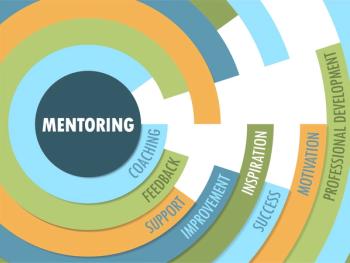
- Vol 34 No 12
- Volume 34
- Issue 12
Measuring Up on Mental Health?
Tracking and measuring the nation’s health is no easy undertaking. How are we doing?
Lessons Learned From the Healthy People 2020 Midcourse Review
Each decade, the nation, under the direction of the federal government’s Office of Disease Prevention and Health Promotion, sets public health goals and objectives to strive for with regard to the promotion of health and prevention of disease. The overarching goals of Healthy People 2020 are to1:
1 Attain high-quality, longer lives, free of preventable disease, disability, injury, and premature death;
2 Achieve health equity, eliminate disparities, and improve the health of all groups;
3 Create social and physical environments that promote good health for all; and
4 Promote quality of life, healthy development, and health behaviors across all life stages.
Although work is already underway to develop a new set of goals for the next decade (Healthy People 2030), the federal government recently took stock of the progress made toward achieving the goals for this decade, in the Healthy People 2020 Midcourse Review. This review is vitally important to determine if our country is on the right track for, or is falling behind in, achieving our national health promotion and prevention goals.
Tracking and measuring the nation’s health is no easy undertaking. Healthy People 2020 consists of 42 topic areas, with more than 1200 objectives, which were closely analyzed to evaluate progress across a variety of measures of health.
How are we doing?
As with most midpoint evaluations, there are positives and negatives. In many aspects of our nation’s health, we are exceeding expectations. Great strides are being made in maternal, infant, and child health, with lower rates of preterm births and infant deaths, and lower rates of exposure of children to secondhand smoke. In several topic areas, all measurable objectives that track health improvement have either stayed the same or exceeded their targets, with no worsening of targeted objectives over time, including adolescent health, arthritis, diabetes, HIV, and nutrition and weight status. Unfortunately, in considering the status of mental health in the US, the story is not as positive: none of the main measurable objectives of mental health status have demonstrated statistically significant improvement, and many are, alarmingly, getting worse (Table).
Some good news
We have seen some gains in the expansion of mental health treatment in recent years. For example, more adults are receiving services for co-occurring disorders (from 3.3% in 2008 to 4.2% in 2013); there was a slight increase in screening for depression in primary care settings as well (from 2.2% in 2007 to 2.4% in 2010). A number of improvements in screening for and treatment of alcohol and substance use disorders have been documented, and fewer young people are binge drinking.1 Despite these small gains, many more people need treatment for substance use disorders, all patients in primary care settings would ideally be screened for depression, and we would eliminate binge drinking among young adults.
The bad news
Despite some success overall, progress in mental health promotion and mental illness prevention is not just stagnating-it is deteriorating (Table). There was a significant increase in the age-adjusted suicide rate (from 11.3 to 12.6 deaths per 100,000 of the population) from 2007 to 2013. Mental health worsened for young people, with increased suicide attempts, higher rates of eating disorders, and higher rates of major depressive episodes among high school students. Also, employment rates for people with serious mental illnesses decreased significantly (from 56.0% in 2008 to 48.5% in 2013).1 Moreover, drug use in adults increased, and the number of alcohol-attributable deaths and cirrhosis also increased during the assessment period.1
Lessons learned at the midpoint
Important conclusions can be drawn from the Midcourse Review. We must do better. It is imperative that we consider the factors that have contributed to the gains, but also think hard about what is causing us to slip backward in the quest to improve many of our public mental health goals.
Disparities abound
The Midcourse Review reconfirmed a long-standing fact about our nation’s public health. Health disparities are persistent and, thus far, resistant to initial attempts to reduce or eliminate them. Significant disparities by race/ethnicity and sex were found across most of the domains. Disparities also exist based on educational attainment, income level, and geographic location. Moreover, there is no specific pattern that consistently and universally links certain demographic groups to better outcomes. For example, while male adolescents are less likely to have depression than female adolescents, male adults are more likely to complete suicide than female adults. Non-Hispanic blacks are less likely to complete suicide in adulthood than whites, but biracial adults are more likely to have had a depressive episode in the past year than people of other races/ethnicities. Native Hawaiian or other Pacific Islanders are least likely to have experienced depression in the past year.1
In the rare instances when gains are made, they are not being made equally across disparate population groups. The social determinants of mental health are largely responsible for many of these disparities, and the Great Recession’s impact on income inequality, poverty, and unemployment is intimately tied to the inability to make positive gains in outcomes.2 As a nation, we continue to leave too many people behind in our quest for improved mental health.
Prevention and promotion are key
Many of the areas that are worsening relate to the mental health status of young people. Because mental illnesses and substance use disorders are chronic illnesses that often start in childhood and adolescence, if we wait to treat symptoms of mental illnesses and substance use disorders until they are most obvious in adulthood, we have waited too long to have significant population-level impact. An approach that focuses more on individual risk and protective factors, as well as “the causes of the causes” (including the social and environmental factors that shape risk and protective factors), could ultimately have greater impact than an attempt to treat symptoms and disorders.3 This approach would mean a shift in focus to emphasize prevention of adverse childhood experiences, for example, and diverse other harmful social determinants of mental health that affect young people.4
Similarly, a small shift in focus from treatment of serious mental illnesses and substance use disorders to advancing mental health promotion on a population level could lead to great progress in achieving Healthy People 2020 goals.5 Important mental health promotion priorities include supporting and encouraging strong social ties, educating diverse populations about healthy behaviors, and developing cross-sector collaborations to strengthen protective factors and reduce risk factors within communities.
Public policies work
Many of the significant gains in the treatment expansion category can be attributed to policies and laws that have improved access to care. The passage and implementation of the Affordable Care Act (ACA) and, specifically, the advances in mental health parity that came before, as part of, and after the ACA track very closely with the timing of rare gains that were seen in treatment expansion from a mental health perspective. The slight increase in depression screening in primary care settings was also a focus of the ACA, which allotted specific funding to expand collaborative and integrated care models for depression care. Similarly, more individuals received treatment for co-occurring disorders in 2013 than in 2008, which might be associated with a rise in health insurance coverage for Americans during that time.1
Lack of progress in achieving Healthy People 2020 goals in mental health and substance use disorders are especially concerning, considering that many physical health outcome goals are being achieved. Lagging mental health and substance use disorders outcomes may be particularly sensitive to public policy interventions. Additional policies-focused on improving educational attainment, education quality, and education equality; decreasing income inequality, poverty, and neighborhood-level poverty; increasing employment and reducing job insecurity; improving housing quality and housing equality; and eliminating food insecurity-could have lasting benefits on mental health for the US population.
Changing social norms
The decrease in alcohol and substance use among young people is not by chance. For a multitude of complex reasons, adolescents and young adults hold differing beliefs regarding alcohol and illicit drug use than previous generations. However, the changing social norms surrounding the health benefits of marijuana use, coupled with legislation to legalize recreational marijuana use, have had consequences, one of which may be an increase in marijuana use among young people, even in the face of a decline in the use of other illicit drugs and alcohol. This change in social norms has also driven policy change, as more states are passing laws that legalize recreational marijuana use. The findings from the Midcourse Review shed light on how social norms can influence health outcomes.
Looking to the future
The Healthy People 2020 Midcourse Review serves a number of important purposes for psychiatrists and other mental health professionals. We must be as committed to the promotion of mental health and the prevention of mental illnesses and substance use disorders as we are to treatment. We must also embrace the nation’s health goals, as set forth in Healthy People 2020 and then in Healthy People 2030, and work across sectors to tackle some of the greatest challenges to improving the population’s mental health. The numbers indicate that we must redouble our efforts in response to these challenges. Doing so will require work outside of clinical settings as we collaborate with other groups in implementing evidence-based practices and programs that are known to promote mental health and prevent mental illnesses and substance use disorders. It also means improving local, state, and federal policies and legislation across far-ranging areas (eg, education, employment, housing) so that their downstream effects will reduce rather than increase risk, while at the same time working to shift social norms in a way that ultimately accomplishes the same goal.
Disclosures:
Dr. Shim is Associate Professor of Clinical Psychiatry, Department of Psychiatry and Behavioral Sciences, University of California Davis, Sacramento, CA; Dr. Compton is Professor of Clinical Psychiatry, Columbia University College of Physicians and Surgeons, New York, NY.
The authors report no conflicts of interest concerning the subject matter of this article.
References:
1. National Center for Health Statistics. Healthy People 2020 Midcourse Review. Hyattsville, MD; 2016.
2. Compton MT, Shim RS, eds. The Social Determinants of Mental Health. Washington, DC: American Psychiatric Publishing; 2015.
3. Marmot M. Social determinants of health inequalities. Lancet. 2005;9464:1099-1104.
4. Frieden TR. A framework for public health action: the health impact pyramid. AJPH. 2010;4:590-595.
5. Kalra G, Christodoulou G, Jenkins R, et al. Mental health promotion: guidance and strategies. Eur Psychiatry. 2010;27:81-86.
Articles in this issue
almost 8 years ago
Technological Ventures Offer New Hope for the Future of Psychiatryalmost 8 years ago
Telepsychiatry-Based Culturally Sensitive Collaborative Treatmentalmost 8 years ago
Introduction: Innovations to Improve Mental Health Outcomesalmost 8 years ago
Leveraging Smartphones in Patient Carealmost 8 years ago
THE QUIZ/Fibromyalgiaalmost 8 years ago
The Best and Not So Great Articles of 2017almost 8 years ago
Stress, Neural Plasticity, and Major Depressionalmost 8 years ago
Wound Healingalmost 8 years ago
Strategies and Solutions for Switching Antidepressant Medicationsalmost 8 years ago
The Best of Times, the Worst of Times: 2017Newsletter
Receive trusted psychiatric news, expert analysis, and clinical insights — subscribe today to support your practice and your patients.














